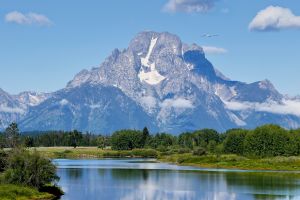The Earth is not just a planet, it is our home, and we should cherish and protect it at all costs. Rivers, which are often referred to as the blood of the earth, have been flowing continuously throughout the history of the planet.
They transport matter and energy, maintain the ecological balance of the earth's surface system, and support life. However, there is one form of river landscape that stands out as a breathtaking beauty and attracts people from all over the world-the waterfall.
In geology, a waterfall is a sudden interruption of a river caused by geological tectonic movements such as faults or depressions, surface changes such as volcanic eruptions, or erosion and dissolution of rocks by flowing water.
The unique aesthetic value of waterfalls gives people a dynamic aesthetic feeling full of vitality, making them an important waterscape tourism resource.
Waterfalls are formed by the earth's internal and external forces. During the time of the river, a waterfall is a temporary feature that will eventually disappear due to the fall of the waterfall, the volume of water, the type and structure of rocks, and several other factors. Where there are waterfalls, the river always erodes upstream, flattening the course.
The formation and development of waterfalls is an important manifestation of the evolution history of rivers. It develops dynamically with the change of the river curve and is affected by the joint influence of internal and external stresses, constantly changing its position and shape. The waterfall we see now is just a brief moment in its life.
Many of the world's largest waterfalls have a clear "backward" tendency. For example, Niagara Falls has a drop of about 50 meters today. According to the inference of the rock formation, the previous location was downstream, and the drop was maybe 100 meters.
Now, the waterfall retreats more than 1 meter upstream every year, and the drop is decreasing. At this rate, Niagara Falls will disappear completely in another 50,000 years.
Human activities have also had a significant impact on waterfalls. The development of hydropower stations, construction of dams and roads, and other projects can change the flow of rivers and the ecological environment on the banks, thereby affecting the shape and number of waterfalls.
At the same time, human tourism and entertainment activities may also bring garbage and pollution to the environment around the waterfall.
To protect the ecological environment and beautiful landscape of the waterfall, governments and organizations of various countries have adopted a series of measures. For example, Canada's Niagara River Basin Authority maintains the beauty of Niagara Falls by controlling water levels and flows.
The National Park Service of the United States has protected the waterfalls and natural environment in Yellowstone National Park by limiting the number of tourists and the scale of development of tourist facilities.
As one of the natural landscapes of the earth, waterfalls not only have unique aesthetic value and tourism resource value but are also an important embodiment of the evolution history of rivers and the earth's ecosystem.
We need to protect the ecological environment and beautiful landscape of the waterfall, and at the same time, we need to respect the natural laws and evolution process, so that the waterfall can continue to grow and develop in nature.
The earth and its natural landscapes are precious resources that we must take care of. Waterfalls, as a stunning and dynamic aspect of nature, have an immense aesthetic and ecological value that we must protect.
It is our responsibility to ensure that waterfalls continue to thrive in the wild while minimizing our impact on them. By doing so, we can preserve these natural wonders for future generations to enjoy.


